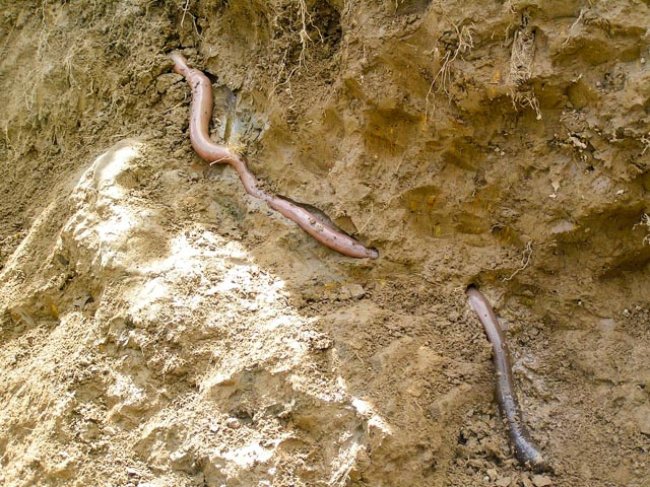The Bass River Valley of South Gippsland, in the southeastern Australian state of Victoria is home to the world’s largest earthworms, which can grow up to 6.6 feet in length.
The giant Gippsland earthworm (Megascolides australis) is one of the world’s most elusive and fascinating creatures, able to survive in an environment completely changed by its human inhabitants and rarely showing up above ground. These enormous earthworms can only be found in a 150 square mile area, a habitat once blanketed by dense forests but that has now been completely converted to farmland. Apart from its size, this ability to survive in a landscape in which the native vegetation has been entirely removed is another fascinating trait of the giant Gippsland earthworm.
The elusive earthworm was originally discovered in the 1800s, when workers surveying a rail line accidentally unearthed a specimen. Thinking that it was some sort of snake, they took it to a professor at the University of Melbourne, who confirmed that it was actually an overgrown earthworm. Since then specimens consistently measuring over one meter in length have been discovered, as well plenty of specimens measuring up to 2 meters.
Although the Guinness world record for the world’s largest earthworm belongs to a specimen of Microchaetus rappi of South Africa measuring 6.7 m (21 ft), as a species, Megascolides australis is by far the world’s largest earthworm.
These fascinating worms have a very soft skin, so they live in permanent, moist burrow systems. Because of their size and the moist ground around their burrows, the rapid underground movement of giant Gippsland earthworms produces weird, gurgling noises reminiscent of water draining out of a bathtub. These bizarre sounds are loud enough to be heard above ground, and have been known to “terrify the uninitiated”.
Using their muscular heads to burrow through the ground while ingesting fungi, bacteria, algae, and microbes, giant Gippsland earthworms can reach depths of up to 5 feet. They are some of the most elusive creatures known to man, as they are rarely seen above ground. In fact, the only time they are known to surface is during heavy rains, when their burrows get flooded.
Although the giant earthworms to adapt and survive in their endemic home despite it having changed drastically in the last two centuries is amazing, human activity has put the species on the endangered list. The toxins used in agriculture, and its vulnerability to physical injuries due to its sheer size haven’t helped things, and neither has the species’ mating habits.
No one really knows how giant Gippsland earthworms copulate, as surfacing seems unlikely due to the threat of predators, and their underground burrows are barely wide enough for one specimen to pass through at a time. Some scientists theorize that the worms can lengthen their bodies, thus becoming slim enough for two of them to fit in the burrows alongside each other, but no one really knows for sure how it happens.
Giant Gippsland earthworms will only produce one egg per year, from which a single individual will emerge, after a period of 12 months. Measuring about one foot long at the time of hatching, the baby earthworm is already huge, but it has a very slow growth rate for the rest of its life, which some scientists say suggests that it can live for up to 10 years, maybe even more.




